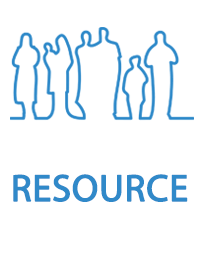B.02.01 CCCM CLUSTER TEAM
SHEPHERD-BARON, J. (2011-05) WHAT DO CLUSTER COORDINATORS DO? (CLUSTERWISE 2)
Section: Members of a Coordination Team (pp3-4) no link | Web link 2
List of team members and team structure for a Cluster Coordination team. Includes organigram of Cluster Coordination team.
IFRC (2012-01) SHELTER COORDINATION IN NATURAL DISASTERS
Section: Part 4 - Cluster Coordinator (pp29-33)
Brief overview of role of the Cluster Coordinator and the Cluster team members, which is relevant to CCCM despite specific references to Shelter Cluster.
G-CCCM-C (2014-01) TERMS OF REFERENCE FOR CCCM CLUSTER COORDINATORS
Section: Whole document (pp1-4)
Terms of Reference specifically for CCCM Cluster Coordinators (internal document, currently unapproved and duplicated in Tools and Templates folder).
B.02.02 CAMP MANAGER IDENTIFICATION
NRC (2008) CAMP MANAGEMENT TOOLKIT
Section: 2. Roles and Responsibilities (pp41-74)
"The Camp Management Toolkit highlights essential issues of protection and service provision in camps and camp-like settings and provides practical advice for camp management staff on how best to ensure the overall coordination and management of a camp and uphold the rights of displaced persons."
B.02.03 FOCAL POINTS
UNHCR (2010-01) COLLECTIVE CENTRE GUIDELINES
Section: 3. Roles and responsibilities (pp11-16)
Summary of different types of coordination structures for the 3 levels of coordination of collective centres: - Collective Centre Administrator, which is generally the State; - Collective Centre Coordinator (the CCCM Cluster Coordinators); and - Collective Centre Manager (international or local organizations, or government structures)
B.02.05 DISPLACED SETTLEMENTS WITHOUT CAMP MANAGERS
CCCM PHILIPPINES (2013-12) CCCM DISPLACEMENT SITES INFOSHEET
Section: Whole document (pp) verview of use of DTM in Philippines, including data collection from spontaneous settlements without camp managers. "As IDPs may transition from one settlement type to another, CCCM covers all displacement sites in order to gain a comprehensive picture of mobility and the evolving needs of the displaced population as a whole."
B.02.06 SAG, TWIG, HUBS
SHEPHERD-BARON, J. (2011-05) TWO-TIER COORDINATION MANAGEMENT: SAG & TWIG (CLUSTERWISE 2)
Section: Whole document (pp1-6)
Explanation of the two-tier model for Cluster management for emergencies where membership of the Cluster is too large to enable effective meetings in one forum only. "This model ensures that everyone gets a say in how evidence is used and the most appropriate technical standards are applied to ensure that the needs of the most vulnerable and difficult-to-reach are not ignored."
B.02.07 NATIONAL AUTHORITIES
UNHCR (2010-01) COLLECTIVE CENTRE GUIDELINES
Section: 2.2 General responsibility (p7)
Obligations of National Authorities in relation to collective centres and importance of monitoring.
IASC (2011-07) OPERATIONAL GUIDANCE FOR CLUSTER LEAD AGENCIES ON WORKING WITH NATIONAL AUTHORITIES
Section: Coordinating the response (pp3-4)
Overview of activities to undertake in partnership with National Authorities.
Section: Coordination mechanisms (pp2-3)
Guidance note identifies 3 scenarios: 1) National authorities are able to lead or contribute 2) National authorities’ ability to lead or contribute is compromised 3) National authorities are unwilling to lead or contribute, and/or humanitarian principles are not respected.

